-
 Bitcoin
Bitcoin $84,871.7534
-0.35% -
 Ethereum
Ethereum $1,619.4309
-1.12% -
 Tether USDt
Tether USDt $0.9995
-0.02% -
 XRP
XRP $2.1431
-0.53% -
 BNB
BNB $585.8720
-1.63% -
 Solana
Solana $130.5534
-1.62% -
 USDC
USDC $0.9998
-0.02% -
 Dogecoin
Dogecoin $0.1658
-0.71% -
 TRON
TRON $0.2554
3.89% -
 Cardano
Cardano $0.6462
-1.82% -
 UNUS SED LEO
UNUS SED LEO $9.4169
0.83% -
 Chainlink
Chainlink $12.8305
-2.26% -
 Avalanche
Avalanche $19.9412
-2.54% -
 Stellar
Stellar $0.2411
-1.64% -
 Sui
Sui $2.2681
-2.91% -
 Shiba Inu
Shiba Inu $0.0...01222
-2.16% -
 Hedera
Hedera $0.1675
-4.48% -
 Toncoin
Toncoin $2.8369
-4.71% -
 Bitcoin Cash
Bitcoin Cash $350.1684
2.22% -
 Litecoin
Litecoin $78.7554
0.37% -
 Polkadot
Polkadot $3.7209
0.17% -
 Dai
Dai $1.0000
-0.02% -
 Hyperliquid
Hyperliquid $15.6087
-5.86% -
 Bitget Token
Bitget Token $4.3141
-1.86% -
 Pi
Pi $0.7445
2.13% -
 Ethena USDe
Ethena USDe $0.9989
-0.02% -
 Monero
Monero $204.7026
-1.86% -
 Uniswap
Uniswap $5.4145
-1.33% -
 OKB
OKB $53.2886
-2.02% -
 Pepe
Pepe $0.0...07493
1.62%
How to achieve high returns on cross-border payments through blockchain?
Blockchain technology enables high returns on cross-border payments by reducing costs, speeding up transactions, and enhancing security and transparency.
Apr 12, 2025 at 05:57 pm
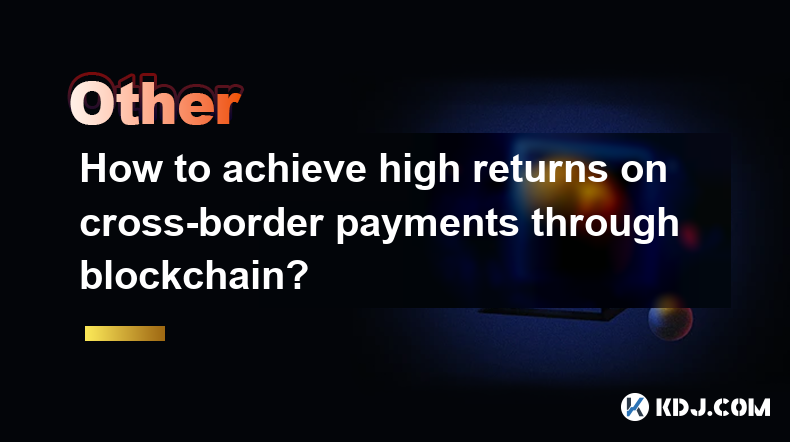
How to Achieve High Returns on Cross-Border Payments Through Blockchain?
Cross-border payments have traditionally been plagued by high fees, slow processing times, and a lack of transparency. However, the advent of blockchain technology offers a promising solution to these issues, potentially allowing for high returns on such transactions. Blockchain technology enables secure, fast, and cost-effective cross-border payments, making it an attractive option for businesses and individuals alike. In this article, we will explore how to leverage blockchain to achieve high returns on cross-border payments.
Understanding Blockchain and Its Benefits for Cross-Border Payments
Blockchain is a decentralized ledger technology that records transactions across numerous computers, ensuring that the data cannot be altered retroactively. This technology offers several benefits for cross-border payments:
- Reduced Costs: Traditional cross-border payments often involve multiple intermediaries, each charging fees. Blockchain eliminates many of these intermediaries, significantly reducing transaction costs.
- Faster Processing Times: Traditional methods can take days to process due to the involvement of multiple banks and regulatory bodies. Blockchain transactions can be completed in a matter of seconds or minutes.
- Increased Transparency: Every transaction on a blockchain is recorded on a public ledger, making it easier to track and verify payments.
- Security: Blockchain's decentralized nature makes it highly resistant to fraud and cyber-attacks.
By understanding these benefits, you can begin to see how blockchain can lead to high returns on cross-border payments.
Choosing the Right Blockchain Platform for Cross-Border Payments
Selecting the appropriate blockchain platform is crucial for maximizing returns on cross-border payments. Several platforms are available, each with its own set of features and capabilities:
- Ripple (XRP): Known for its focus on financial institutions, Ripple offers fast and low-cost cross-border payments. It is designed to integrate seamlessly with existing banking systems.
- Stellar (XLM): Stellar aims to connect financial institutions, businesses, and individuals, making it a versatile option for various types of cross-border payments.
- Ethereum (ETH): While primarily known for smart contracts, Ethereum can also be used for cross-border payments, especially for those requiring more complex transaction logic.
When choosing a platform, consider factors such as transaction speed, fees, security, and the specific needs of your business or personal use case.
Setting Up a Blockchain Wallet for Cross-Border Payments
To start using blockchain for cross-border payments, you will need to set up a blockchain wallet. Here's how to do it:
- Choose a Wallet Provider: Select a reputable wallet provider that supports the blockchain platform you have chosen. Popular options include Coinbase, Binance, and Ledger.
- Download and Install the Wallet: Follow the provider's instructions to download and install the wallet on your device.
- Create an Account: Register for an account with the wallet provider, providing the necessary personal information and completing any required verification steps.
- Secure Your Wallet: Set up strong passwords and enable two-factor authentication to protect your wallet from unauthorized access.
- Deposit Funds: Transfer funds into your wallet using the provided deposit address. Ensure you are using the correct blockchain network to avoid losing your funds.
Once your wallet is set up and funded, you are ready to start making cross-border payments.
Executing Cross-Border Payments Using Blockchain
To execute a cross-border payment using blockchain, follow these steps:
- Select the Recipient: Determine the recipient's blockchain address or wallet ID. Ensure you have the correct details to avoid sending funds to the wrong recipient.
- Enter the Amount: Specify the amount you wish to send in the cryptocurrency of your chosen blockchain platform.
- Review Transaction Details: Carefully review all transaction details, including the recipient's address, the amount, and any associated fees.
- Confirm and Send: Once you are satisfied with the transaction details, confirm and send the payment. The transaction will be processed on the blockchain network and should reach the recipient within a short time.
By following these steps, you can efficiently and securely execute cross-border payments using blockchain technology.
Monitoring and Optimizing Your Blockchain Transactions
To achieve high returns on cross-border payments, it's essential to monitor and optimize your transactions. Here are some strategies to consider:
- Track Transaction Fees: Regularly review the fees associated with your transactions and compare them across different platforms to ensure you are getting the best rates.
- Optimize Transaction Timing: Some blockchain networks experience congestion during peak times, leading to higher fees and slower processing times. Monitor network activity and choose optimal times for your transactions.
- Utilize Smart Contracts: If using a platform like Ethereum, consider utilizing smart contracts to automate and streamline your cross-border payment processes, potentially reducing costs and errors.
- Stay Informed: Keep up-to-date with developments in blockchain technology and the cryptocurrency market to identify new opportunities for optimizing your cross-border payments.
By actively monitoring and optimizing your transactions, you can maximize the returns on your cross-border payments.
Frequently Asked Questions
Q: Can I use blockchain for personal cross-border payments, or is it only suitable for businesses?
A: Blockchain can be used for both personal and business cross-border payments. Platforms like Stellar are designed to cater to individuals, while others like Ripple focus more on institutional use. Choose a platform that aligns with your specific needs.
Q: Are there any risks associated with using blockchain for cross-border payments?
A: While blockchain offers many benefits, there are risks to consider, such as volatility in cryptocurrency prices, potential regulatory changes, and the need to protect your wallet from cyber threats. Always conduct thorough research and implement strong security measures.
Q: How can I convert cryptocurrency received from a cross-border payment back to my local currency?
A: You can convert cryptocurrency to your local currency using a cryptocurrency exchange. Platforms like Coinbase and Binance allow you to sell your cryptocurrency and withdraw the funds to your bank account. Be aware of any fees and exchange rates that may apply.
Q: Is it possible to use blockchain for cross-border payments without holding cryptocurrency?
A: Some blockchain platforms, like Ripple, allow financial institutions to use their services without directly holding cryptocurrency. However, for individual users, holding cryptocurrency is typically required to make cross-border payments via blockchain.
Disclaimer:info@kdj.com
The information provided is not trading advice. kdj.com does not assume any responsibility for any investments made based on the information provided in this article. Cryptocurrencies are highly volatile and it is highly recommended that you invest with caution after thorough research!
If you believe that the content used on this website infringes your copyright, please contact us immediately (info@kdj.com) and we will delete it promptly.
- The Mantra Team Has Addressed the Crypto Community Following the Mantra (OM) Token Price Crash
- 2025-04-14 08:35:13
- 5 Crypto Gems That Could Explode in Value
- 2025-04-14 08:35:13
- BlockDAG Capitalizes on Market Uncertainty as Cardano (ADA) and Toncoin (TON) Stumble
- 2025-04-14 08:30:13
- BlockDAG (BDAG) Is Shaping Up to Be One of the Most Talked-About New Crypto Projects
- 2025-04-14 08:30:13
- CryptoPunks NFT Trader "Wilcox" Faces 6-Year Jail Term After Avoiding Taxes on $13M in Income
- 2025-04-14 08:25:12
- The price of OM, the native token of the Mantra blockchain, dropped over 90% within 24 hours
- 2025-04-14 08:25:12
Related knowledge

How to achieve high returns on cross-border payments through blockchain?
Apr 12,2025 at 05:57pm
How to Achieve High Returns on Cross-Border Payments Through Blockchain? Cross-border payments have traditionally been plagued by high fees, slow processing times, and a lack of transparency. However, the advent of blockchain technology offers a promising solution to these issues, potentially allowing for high returns on such transactions. Blockchain te...
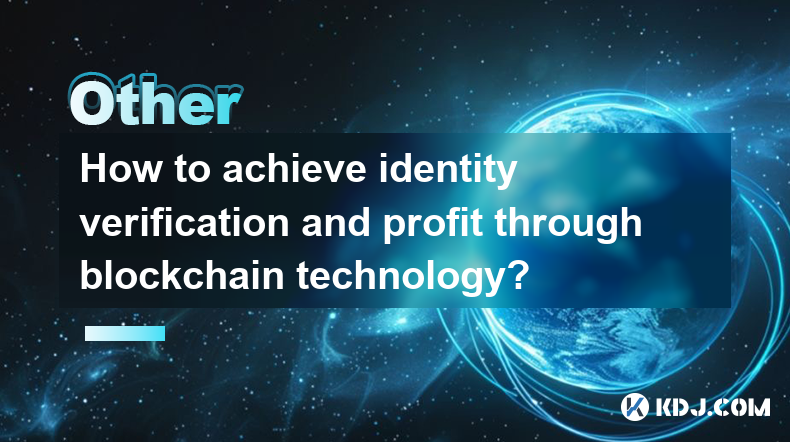
How to achieve identity verification and profit through blockchain technology?
Apr 12,2025 at 10:35pm
Achieving identity verification and profit through blockchain technology involves understanding the underlying principles of blockchain, exploring specific applications that facilitate identity verification, and leveraging these technologies to generate profit. This article will delve into these aspects, providing a comprehensive guide on how to navigat...
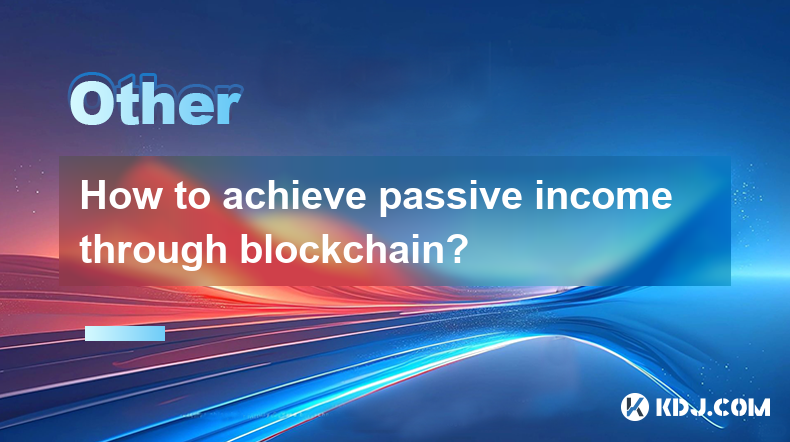
How to achieve passive income through blockchain?
Apr 13,2025 at 09:00pm
Achieving passive income through blockchain technology has become an increasingly popular strategy among cryptocurrency enthusiasts and investors. Blockchain technology offers a decentralized platform that can be utilized to generate income with minimal ongoing effort. This article will explore various methods through which you can achieve passive incom...
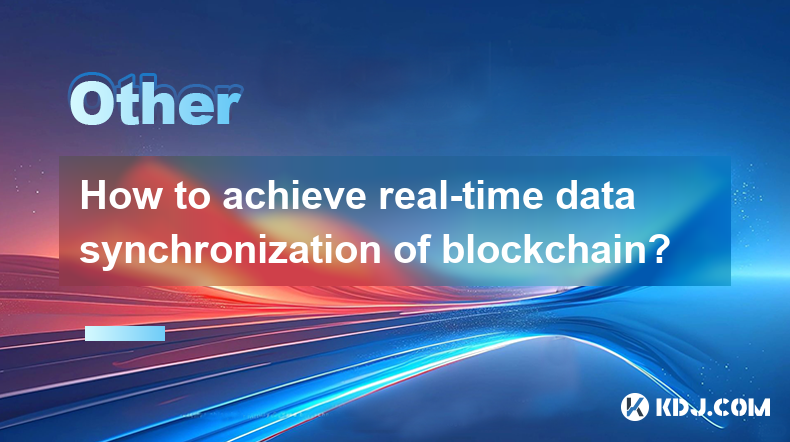
How to achieve real-time data synchronization of blockchain?
Apr 14,2025 at 06:57am
Achieving real-time data synchronization in blockchain is crucial for ensuring that all participants in the network have access to the most up-to-date information. This process involves multiple steps and technologies to ensure that data is transmitted and validated quickly and accurately across the network. In this article, we will explore the methods ...

How to achieve true ownership of virtual assets in blockchain games?
Apr 13,2025 at 03:35pm
Achieving true ownership of virtual assets in blockchain games is a topic that has garnered significant attention within the cryptocurrency community. The promise of blockchain technology lies in its ability to provide verifiable ownership and control over digital assets, which is particularly appealing in the gaming sector where players seek to own, tr...
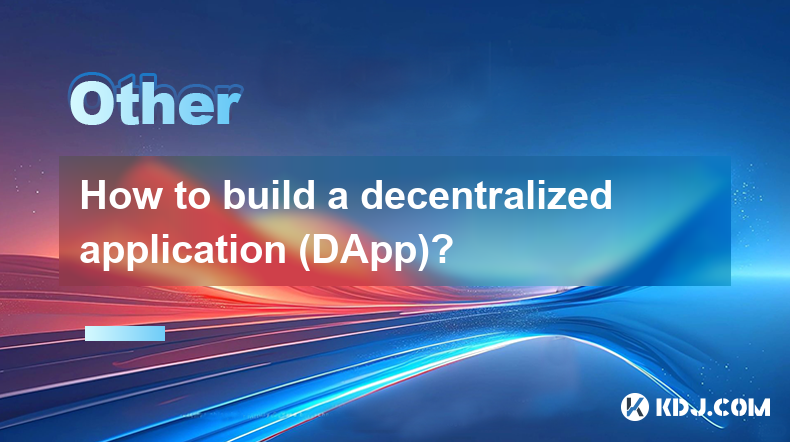
How to build a decentralized application (DApp)?
Apr 14,2025 at 01:01am
Building a decentralized application (DApp) involves several key steps and considerations that are crucial for ensuring the application's functionality, security, and decentralization. This guide will walk you through the process of creating a DApp, from conceptualization to deployment. Understanding the Basics of DAppsBefore diving into the development...

How to achieve high returns on cross-border payments through blockchain?
Apr 12,2025 at 05:57pm
How to Achieve High Returns on Cross-Border Payments Through Blockchain? Cross-border payments have traditionally been plagued by high fees, slow processing times, and a lack of transparency. However, the advent of blockchain technology offers a promising solution to these issues, potentially allowing for high returns on such transactions. Blockchain te...

How to achieve identity verification and profit through blockchain technology?
Apr 12,2025 at 10:35pm
Achieving identity verification and profit through blockchain technology involves understanding the underlying principles of blockchain, exploring specific applications that facilitate identity verification, and leveraging these technologies to generate profit. This article will delve into these aspects, providing a comprehensive guide on how to navigat...

How to achieve passive income through blockchain?
Apr 13,2025 at 09:00pm
Achieving passive income through blockchain technology has become an increasingly popular strategy among cryptocurrency enthusiasts and investors. Blockchain technology offers a decentralized platform that can be utilized to generate income with minimal ongoing effort. This article will explore various methods through which you can achieve passive incom...

How to achieve real-time data synchronization of blockchain?
Apr 14,2025 at 06:57am
Achieving real-time data synchronization in blockchain is crucial for ensuring that all participants in the network have access to the most up-to-date information. This process involves multiple steps and technologies to ensure that data is transmitted and validated quickly and accurately across the network. In this article, we will explore the methods ...

How to achieve true ownership of virtual assets in blockchain games?
Apr 13,2025 at 03:35pm
Achieving true ownership of virtual assets in blockchain games is a topic that has garnered significant attention within the cryptocurrency community. The promise of blockchain technology lies in its ability to provide verifiable ownership and control over digital assets, which is particularly appealing in the gaming sector where players seek to own, tr...

How to build a decentralized application (DApp)?
Apr 14,2025 at 01:01am
Building a decentralized application (DApp) involves several key steps and considerations that are crucial for ensuring the application's functionality, security, and decentralization. This guide will walk you through the process of creating a DApp, from conceptualization to deployment. Understanding the Basics of DAppsBefore diving into the development...
See all articles























































































